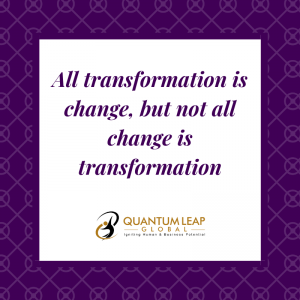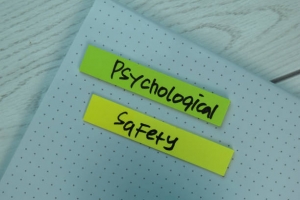Using change for gain

I recently spoke to a national team of a global brand that had undergone considerable change. I shared my journey through significant change as both a leader and a fellow human and how I used the time as a catalysis for growth and transformation.
There is a lot of great guidance on how to ‘make change stick’ in organisations and the critical aspects to ensure change sustainability. But it is also essential to support individuals with proven approaches to get the most out of the change that will inevitably come.
We know that change can be challenging, particularly when we feel change is forced upon us, like losing a job, losing a loved one or an illness. Change can knock our sense of identity and sense of self, leaving us feeling fatigued and stressed, particularly if we feel uncertain about our future.
Like many of us, I have also felt the consistency of change, including the change I chose and the change I didn’t choose. The change of choice included leaving jobs, moving states, moving countries (three times), moving house, starting a business, etc. I have also experienced change that was not by choice, such as the sudden loss of my first husband, the illness and subsequent passing of my little sister, changes in organisational structures that resulted in team member redundancies, and more. Each event, I felt a sense of loss of what was, but I was also able to use the time to reflect and make changes to what was no longer working in my life and transition into a new beginning of what may be.
Here are some of the things I learned along the way:
- We don’t always get to choose what happens to us, but we do get to choose how we respond.
- Choose a mindset that supports growth and well-being. Resisting change will only cause added stress and feelings of frustration, anxiety and helplessness.
- Honour how you are feeling with compassion and without judgement, then allow your feelings to release. In society, particularly in a work sense, we can be expected to ‘just’ move on, but our emotions serve a purpose and are important guides in life.
- Being stuck in what was and fear, stops us from looking at what the possibilities maybe for the future.
- Commit to using the opportunity for gain rather than just pain.
On a final note, all humans have a natural reaction called fight-or-flight when under perceived threat, and we can’t control when this reaction occurs. However, we can learn to recognise the response and calm the system before making important decisions or reacting. Refer verywellmind for guidance on taming the fight-or-flight response.
If you would like to learn more about building high performing teams that are adaptable to change, connect with me at marianne@quantumleap-global.com to book a consultation.


